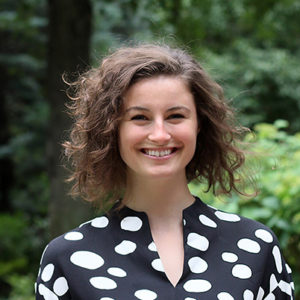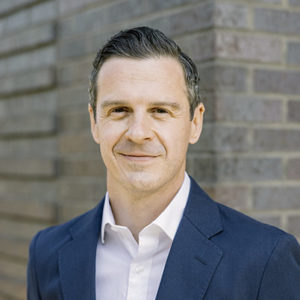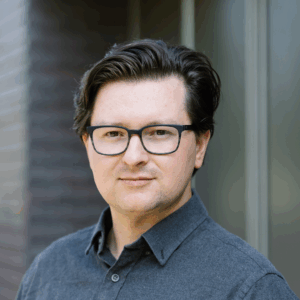Virtual Seminars are engaging and interactive learning opportunities for small groups of mayors and their senior staff. Each one-hour seminar features a deep-dive presentation on a single timely topic from a design expert, followed by a moderated group discussion among the attendees.
Virtual Seminar: How U.S. cities fund, govern, and maintain parks and public spaces
How do other cities structure the financing, governance, and long-term care of their public spaces? This seminar examined how parks and civic spaces move from idea to implementation: who funds them, who governs them, and how they’re maintained over time. Drawing from 27 built projects across nine U.S. cities, this seminar highlighted real-world capital strategies, administrative models, and the trade-offs different cities navigate.
Aminah McNulty, Urban Planner and Research Associate at PORT, and Nick Jabs, Senior Associate at PORT, shared insights from Constructing the American Public Realm (CAPR) — a multi-year research initiative designed to support local leaders. CAPR offers a clear framework for evaluating public space systems, helping mayors identify structural gaps, assess current approaches, and chart more effective, long-term investment strategies. This framework equips leaders to make smarter decisions about the civic spaces their communities rely on.
CAPR is a collaborative research project — initiated by the McHarg Center at the University of Pennsylvania and PORT, a Philadelphia- and Chicago-based public realm design practice — that examines how public space in the U.S. is conceived, funded, built, and maintained.
Watch the presentation (31:16):
Key Takeaways
Mayors bring a variety of opportunities regarding parks and public spaces to MICD, from reconnecting a lost riverfront, to giving City Hall a new “front porch”, to using parks to stitch back together disconnected neighborhoods. When mayors learn about exemplary projects around the country that have achieved those goals, they next ask: How did other cities get these projects done? How are they paying for this work and structuring these projects for long-term success?
In the webinar recording above, the team behind Constructing the American Public Realm (CAPR) shares insights about the variety of funding mechanisms and structural paradigms for parks and public spaces seen around the country, across three project types:
Neighborhood projects
- Neighborhood projects are the smallest-scale spaces in the study, with lower budgets but significant impacts on daily life and neighborhood equity. They are designed for hyper-local uses and tailored to community needs, like Centennial Commons in Philadelphia, Strauss Park in St. Louis, and Splash Pad Park in Oakland.
- These projects are often city-owned and may include philanthropic sources as well as community-based fundraising.
Connective projects
- Connective projects are linear spaces like greenways and civic corridors, such as Midtown Greenway in Minneapolis, Grand Canalscape in Phoenix, and South Waterfront Greenway in Portland, OR.
- Because they often require careful coordination across neighborhoods and jurisdictions, these projects may include various scales of city/county/state funding. These projects often include transportation-related funding sources due to their impacts on mobility.
Signature projects
- Signature projects are high-profile parks and public spaces that serve as destinations for local, regional, and tourist users, like Klyde Warren Park in Dallas, Martin’s Park in Boston, and Historic Fourth Ward Park in Atlanta.
- Philanthropic funding often makes up a significant piece of the capital stack. Depending on the multi-layered benefits of a project, such as transportation or stormwater benefits, different types of federal, state, and city funds may all be seen.
The webinar recording contains greater detail about these projects and the findings from this initiative. For more information, explore the 64-card Public Space Funding Primer deck, which “translate[s] complex funding models, governance structures, and investment mechanisms into an accessible format for practitioners and advocates.”
Speakers

Aminah McNulty is an urban planner and research consultant with over a decade of experience in civic infrastructure, land use policy, and public sector strategy. She leads Constructing the American Public Realm, a national research initiative developed with PORT and the McHarg Center for Urbanism and Ecology that builds tools to strengthen how cities fund, govern, and sustain public space. Her work supports local governments and civic institutions in aligning policy, capital planning, and institutional frameworks to deliver more equitable, durable public realm systems. Aminah is a 2025 Land and Water Fellow with the Lincoln Institute of Land Policy and holds dual Master’s degrees in City Planning and Landscape Architecture from the University of Pennsylvania.

Christopher Marcinkoski AIA, ASLA (Affil.), FAAR
Partner, PORT
Christopher Marcinkoski is Founding Partner at PORT and an Associate Professor in the Department of Landscape Architecture at the University of Pennsylvania. With two decades of experience in urban design, landscape architecture, and planning, he leads interdisciplinary teams in shaping complex sites into public environments that are socially resonant and ecologically resilient. As PORT’s creative director, he oversees the office’s design and construction of civic spaces across the U.S. His writing and research investigate the political and economic forces shaping the built environment, including his books The City That Never Was and the forthcoming Constructing the American Public Realm. A Fellow of the American Academy in Rome, he is also a recipient of the Emerging Voices Prize from The Architectural League of New York.

Nick Jabs AIA, PLA, ASLA
Senior Associate, PORT
Nick Jabs is a Senior Associate at PORT, where he leads the implementation of public realm projects from concept to construction. With dual licensure in architecture and landscape architecture, his work focuses on transforming overlooked or contested spaces into dynamic, community-centered environments. His recent projects include major park initiatives in Tennessee, Pennsylvania, Arkansas, and Idaho. Nick’s work integrates ecological insight with civic design, and he currently serves on the Board of Directors for the Landscape Architecture Foundation. He has co-taught studios at the University of Pennsylvania and the University of Delaware, and was recognized as a National Olmsted Scholar Finalist and AIA Philadelphia’s Young Architect of the Year.

